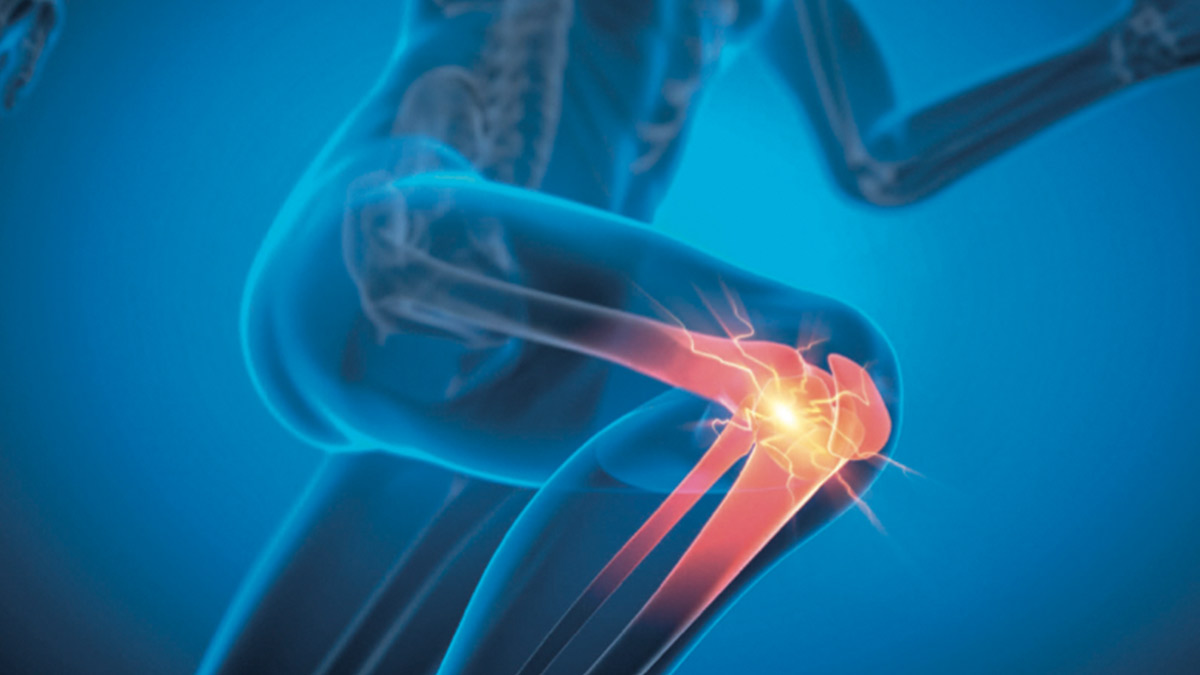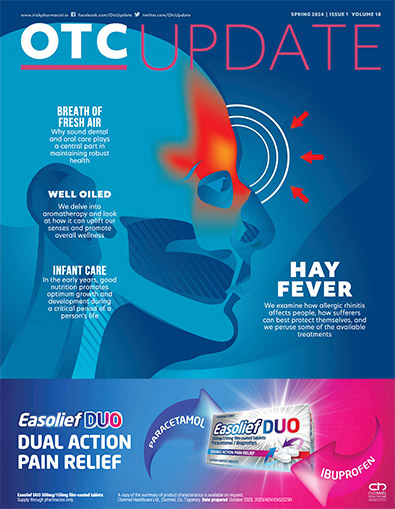Cancer — the second leading cause of death globally — is a large group of diseases that is characterised by the abnormal and uncontrollable growth of cells, with the potential to invade or spread to other organs in the body
Introduction
Oncology is the branch of medicine that specialises in the study of cancer, encompassing the prevention, diagnosis, and treatment of cancer. It also includes screening populations for cancer, follow-up with patients after successful treatment, and palliative care of patients with terminal cancer. The area of oncology has three major subdivisions:
- Medical oncology – which deals with the treatment of cancer using medication, including chemotherapy and targeted therapy;
- Radiation oncology – which involves the use of radiation therapy to treat cancer;
- Surgical oncology – which uses surgery to remove cancerous tumours and nearby tissue.
Cancer is a large group of diseases that is characterised by the abnormal and uncontrollable growth of cells, with the potential to invade or spread to other organs in the body. Cancer is the second leading cause of death globally, behind heart disease. Cancer accounts for an estimated 9.6 million deaths globally, or one in every six deaths. More than one in two people will develop some form of cancer during their lifetime. More than 200 types of cancers exist. Breast, lung, cervical, colorectal, and thyroid cancer are among the most common cancers in women, while prostate, lung, colorectal, stomach, and liver cancer are among the most common cancers in men. Cancer is a huge burden worldwide and it exerts a huge physical and emotional pressure on individuals, families, and the health system. In countries with well-developed health systems, survival rates of many cancers are improving due to early detection and quality of treatment.
Pathophysiology
Cancer is caused by a loss of control of tissue growth regulation. The genes that regulate cell growth and differentiation are altered in cancerous cells. There are two main categories of affected genes – oncogenes and tumour suppression genes. Oncogenes promote cell reproduction and growth, while tumour suppression genes inhibit cell division. Malignancy can occur due to formation of new oncogenes, overexpression of normal oncogenes, or under expression of tumour suppression genes. These processes are fundamental in the transformation of normal cells into cancerous cells and are required for malignant tumours to form and grow.
Metastasis is the spread of cancer to other locations in the body and can occur via the blood or the lymphatic system. Cancer can metastasise to many locations, with the most common sites being the brain, lungs, liver, and bones. Metastasis is the cause of most deaths due to cancer. The process of metastasis usually involves the invasion of nearby tissue, moving into blood vessels or lymph nodes, circulation around the body, invading new tissue and growing until a metastatic tumour is formed.
Classification
Cancer is divided into four main categories based on the site of origin:
- Carcinomas – are the most common type of cancer and originate in the skin or in the tissue of organs or glands. They tend to be solid tumours and include colorectal cancer, lung cancer, prostate cancer, and breast cancer.
- Sarcomas – begin in tissues that connect and support organs and body structures. They can develop in muscle, fat, bone, tendons, blood vessels, and lymph vessels – bone cancers are an example.
- Leukaemias – are a cancer of the blood and occur when blood cells undergo a change and grow uncontrollably. Leukaemia can be further classified into acute lymphocytic leukaemia, chronic lymphocytic leukaemia, acute myeloid leukaemia, and chronic myeloid leukaemia.
- Lymphomas – are cancers that originate in the lymphatic system and includes Hodgkin lymphoma and non-Hodgkin lymphoma.
Risk factors
Approximately 90 per cent of cancers are caused by genetic mutations related to lifestyle and environmental factors, with the remaining due to inherited genetics. A substance that is linked to causing cancer is known as a carcinogen. Chemical agents, such as tobacco smoke and alcohol, are associated with an increased risk of cancer. Tobacco smoke, including second-hand smoke, can greatly increase the risk of lung cancer, and cancer in the mouth and throat. Consuming alcohol can increase the risk of liver cancer and other cancers in the digestive system. Radiation exposure, including ultraviolet radiation from sunlight, is associated with an increase in skin cancers. Infection is also a major contributing factor to the development of certain cancers. Human papillomavirus, Epstein-Barr virus, hepatitis viruses, and helicobacter pylori are infections that are associated with an increased risk of different cancers.
More than one in two people will develop some form of cancer during their lifetime
Hormones can play an important role in the development of sex-related cancers. Hormones can promote cell proliferation which accounts for the development of certain cancers. Higher levels of oestrogen and progesterone can increase the risk of breast, endometrial, and ovarian cancers; while testosterone can play a role in testicular and prostate cancers. Physical agents, such as asbestos, can also cause cancer. Diet, physical inactivity, and obesity are also considered to be a risk factor for developing cancer.
Prevention
Cancer prevention involves taking active measures to decrease the risk of cancer. As many cancers are due to environmental and lifestyle factors, certain cancers are potentially preventable. The risk factors mentioned above are associated with a higher risk of developing cancer. Therefore, avoiding tobacco smoke, reducing alcohol intake, being more physically active, maintaining a healthy weight, avoiding physical carcinogens, and avoiding ultraviolet light exposure decreases the risk of developing cancer. Medication can also be used in cancer prevention. Selective oestrogen receptor modulators (SERMs), including tamoxifen and raloxifene, work at oestrogen receptors in the body to reduce the risk of developing breast cancer in high-risk individuals. Vaccination is also an important strategy in cancer prevention. Human papillomavirus is associated with an increased risk of developing cervical cancer, and hepatitis is associated with liver cancer. Vaccines exist for both viruses, and therefore decrease the risk of developing these cancers.
Early warning symptoms and cancer screening
There are several early warning symptoms of cancer that should be thoroughly investigated, and these include:
- Unexplained weight loss;
- Abnormal bleeding;
- Unexplained and persistent pain;
- Heavy night sweats;
- An unusual lump or swelling;
- Skin changes;
- A sore that doesn’t heal;
- Loss of appetite;
- Persistent heartburn or indigestion;
- Persistent mouth or tongue ulcer.
Cancer screening is not possible for many types of cancers, but it can be a very useful tool in the early detection of certain cancers. Diagnosis of cancer is often due to signs or symptoms, but screening is an effort to detect cancer before any symptoms have appeared. In Ireland, cancer screening is provided by the National Screening Service, and they provide screening for cervical, breast, and colorectal cancers. Genetic testing for individuals at a high-risk of certain cancers is also an option, for example, females with the BRCA gene are at a higher risk of developing breast cancer and may choose to undergo extra surveillance or have surgery to reduce this risk.
Diagnosis
Cancer is often initially recognised through cancer screening programmes or due to presentation of signs and symptoms. These can’t lead to a definitive diagnosis and further investigations are required. A range of medical tests including X-rays, magnetic resonance imaging (MRI) scans, computed tomography (CT) scans, and endoscopy can be used to indicate a tumour mass in the body. Blood tests can be used to detect tumour markers which may be indicative of cancer. A biopsy is usually required to make a definite diagnosis. A biopsy is a sample of tissue taken from a site in the body which is then examined under a microscope to observe for the presence of cancer cells.
Cancer staging
Cancer staging is a term that refers to the extent of the cancer, including the size of the tumour and the extent of how it has spread. Staging helps understand the seriousness of the cancer and to select the best treatment options. There are different staging systems that are used, and they usually include information about the location of the tumour, the size of the tumour, whether it has spread to nearby lymph nodes, and whether it has metastasised. The TNM staging system uses a lettering and numbering system to describe the tumour (T), node (N), and metastasis (M). The TNM staging system is outlined below:
T – Refers to the size and extent of the primary tumour.
TX: Tumour size can’t be measured.
T0: Tumour can’t be found.
T1, T2, T3, T4: Refers to the size and extent of the primary tumour, with a higher number indicating a larger or more invasive tumour.
N – Refers to the number of lymph nodes that have cancer.
NX: Cancer in lymph nodes can’t be measured.
N0: Cancer in lymph nodes can’t be found.
N1, N2, N3: Refers to the number and location of lymph nodes that contain cancer, with a higher number indicative of more cancer being found in lymph nodes.
M – Refers to metastasis of the cancer.
MX: Metastasis can’t be measured.
M0: Cancer has not spread to other locations in the body.
M1: Cancer has spread to other locations in the body.
Treatment
A lot of progress has been made in recent years towards understanding cancer development and the different treatment options. Different methods of treatment include surgery, radiation therapy, chemotherapy, targeted therapy, and hormonal therapy. With advancements in early detection and new treatment options, many cancers are now curable. Although remarkable progress has been made in the clinical treatment of cancer, management continues to be a challenge.
Surgery
Surgery is the primary treatment option for isolated and solid tumours. Surgery can also be useful in definitive cancer diagnosis and staging of cancer, as biopsies can be taken during surgery. It can also play a role in palliative care and prolonging life. Surgery is particularly useful in localised cancers, where the entire tumour and lymph nodes can be completely removed. In some cases, where the cancer has not metastasised, surgery is sufficient for a full recovery. The objective can be removal of the tumour, part of the organ, or the entire organ. Mastectomy or lumpectomy for breast cancer, lung surgery for non-small cell lung cancer, and prostatectomy for prostate cancer are examples of different surgery treatment options. Surgery is often performed either before or after other forms of treatment.
Recovery from surgery can be a difficult journey for patients. Post-surgery recovery requires involvement from many healthcare professionals in the multidisciplinary team. Physiotherapists are important for both breathing exercises and physical exercises. Dieticians are important in ensuring proper nutrition for the patient. Depending on the surgery, patients may have to be counselled on their catheter, stoma, or feeding tube. Risk of infection at the site of surgery is an important consideration. Pain often accompanies surgery and analgesia is often necessary for patients. Paracetamol, non-steroidal anti-inflammatory drugs (NSAIDs), and opioids are the mainstay of pain relief post-surgery, as per the World Health Organization (WHO) analgesic ladder. Constipation can often present post-surgery and can be due to lack of physical movement or opioid-induced constipation, and should be treated appropriately with laxatives.
Radiation therapy
Radiation therapy is a very important and cost-effective option for cancer treatment. It is estimated that approximately 50 per cent of cancer patients will receive radiation therapy, with radiation therapy contributing approximately 40 per cent towards curative therapy. Radiation therapy involves the use of ionising radiation to kill cancerous cells. It exerts its mechanism of action by damaging deoxyribonucleic acid (DNA) of cancerous cells, which results in their death. It works from multiple angles, with intersecting shaped radiation beams at the tumour. The objective is to ensure the therapy is localised, damaging cancerous cells and limiting damage to healthy tissues. This allows a larger dose for the tumour than in healthy tissue, which reduces adverse effects. Low energy X-rays are commonly used for skin cancers, with higher energy X-rays generally preferred for internal cancers.
Different cancers respond differently to radiation therapy, with it often being used in addition to other treatment modalities. Adverse effects are associated with radiation therapy, which can depend on the dose and schedule of the therapy. Common adverse effects include fatigue, hair loss, nausea, vomiting, and skin problems which may present as red, irritated, blistered, dry, or itchy skin. A low blood cell count is also possible with radiation therapy, which can lead to problems such as an increased risk of infection. Depending on the site of the radiation therapy, the adverse effects can differ with some common ones outlined below:
- Radiation therapy to the brain: Headache, hearing loss, scalp changes, memory loss, seizures, speech impediments;
- Radiation therapy to the head/neck: Mouth sores, dry mouth, difficulty swallowing, taste changes, jaw stiffness, tooth decay;
- Radiation therapy to the breast: Skin initiation, skin dryness, colour changes, lymphedema;
- Radiation therapy to the abdomen: Diarrhoea, constipation, cramps;
- Radiation therapy to the pelvis: Bladder problems, loss of libido, fertility problems.
Hormone therapy
Hormone therapy has an important role in certain cancers, particularly prostate and breast cancers. It generally involves administration of hormones into the body or drugs that inhibit production or activity of hormones. Steroid hormones are important in gene expression in certain cancers and therefore changing the activity of these hormones can be an effective treatment option.
Inhibition of hormone synthesis can be effective in treating certain types of cancer. Aromatase inhibitors are important in treating breast cancer in postmenopausal women. Oestrogen production declines in the ovaries during menopause but is still produced in other tissues due to the aromatase enzyme. By inhibition of aromatase, oestrogen levels are decreased which is important in hormone-responsive cancers. Letrozole, anastrozole, and exemestane are commonly used aromatase inhibitors. Gonadotropin-releasing hormone (GnRH) analogues work by completely suppressing testosterone production in the testes or oestrogen and progesterone production in the ovaries, due to a negative feedback response of continuous stimulation of the pituitary gland. Leuprorelin and goserelin are GnRH analogues that are parenterally administered to treat hormone-responsive breast and prostate cancer.
Hormone receptor antagonists exert their mechanism of action by binding to a hormone receptor and therefore blocking the activation of the receptor. SERMs act as antagonists of the oestrogen receptor. They are effective in treating hormone receptor-positive cancer in pre-menopausal women and they can also be used for chemoprevention of breast cancer in high-risk females. Tamoxifen and raloxifene are commonly used SERMs in breast cancer therapy. Antiandrogens bind to and inhibit the androgen receptor, which blocks testosterone effects and is important in prostate cancers. Antiandrogens can be used as monotherapy in the long-term treatment of prostate cancer or in the initial treatment alongside GnRH analogues, with bicalutamide a commonly used example.
There are several adverse effects associated with hormone therapy and they can differ in each individual. Adverse effects can depend on factors including the type of hormone therapy, the dosage, and how the body reacts to the medication. Erectile dysfunction is a common adverse effect in males, while vaginal dryness, discharge, and irritation, as well as menstruation changes are common in females. Loss of libido and fertility problems can also be a problem in both males and females. Hot flushes, night sweats, and fatigue are common adverse effects. Patients may undergo weight changes – with a decrease in hormone levels sometimes leading to an increase in fat levels, a decrease in muscle mass, and the development of gynecomastia in men. Patients may also suffer from mood changes and cognitive problems with hormone therapy. Finally, some hormone therapies can increase the risk for other health issues including cardiac problems, osteoporosis, and other types of cancer.
Chemotherapy
Chemotherapy involves the use of one or more anti-cancer drugs as part of a regimen with the objective of killing cancer cells. Chemotherapy often involves a combination of drugs that can be given with the intention to cure cancer, reduce symptoms, or prolong life. Chemotherapy is usually administered intravenously, but there are also oral forms of chemotherapy. Chemotherapy can be considered a systemic therapy as it is introduced into the bloodstream, and it can be combined with local therapies including radiation therapy and surgery.
Chemotherapeutic drugs generally exert their mechanism of action by impairing mitosis, which effectively targets cells that are rapidly dividing. These drugs inhibit mitosis in different ways, with the two most common mechanisms being damage of DNA and inhibition of the cellular machinery involved in cell division. Chemotherapy tends to be more effective in tumours with high growth rates, as a larger proportion of these cells are undergoing division at any time, compared to tumours with low growth rates. There are a wide range of different classes of chemotherapeutic agents in use in oncology, with alkylating agents, antimetabolites, topoisomerase inhibitors, antimicrotubule agents, and cytotoxic antibiotics all examples of classes of drugs used.
Approximately 90 per cent of cancers are caused by genetic mutations related to lifestyle and environmental factors, with the remaining due to inherited genetics
Most chemotherapeutic drugs target all rapidly dividing cells, and not just cancer cells, and therefore, adverse effects are common. Immunosuppression and myelosuppression are common adverse effects of chemotherapy. The majority of chemotherapeutic regimens can cause suppression of the bone marrow. This can lead to a decrease in white blood cells, red blood cells, and platelets, which can lead to immunosuppression and anaemia. Anaemia can also be as a result of bleeding, haemolysis, or malnutrition. Gastrointestinal problems including nausea, vomiting, diarrhoea, and constipation are all common adverse effects of chemotherapeutic agents. This can lead to other issues such as weight loss and dehydration. Alopecia is another adverse effect – it is often temporary, and hair usually starts to regrow but there may be a change in colour, texture, and thickness.
Chemotherapy-induced peripheral neuropathy, characterised by pain, tingling, cold sensitivity, and numbness is another potential adverse effect. Mouth problems are often one of the most commonly observed adverse effects of chemotherapy, with mucositis and xerostomia commonly reported. Infertility and teratogenicity are serious adverse effects that can occur with certain types of chemotherapy. Some chemotherapeutic drugs are gonadotoxic and can cause infertility. Chemotherapy is often teratogenic during pregnancy, especially in the first trimester. It may not be as teratogenic in the second and third trimester but can harm development of the baby and increase the risk of complications.
There are several drugs that can be administered alongside chemotherapeutic drugs to ameliorate adverse effects. Allopurinol is a xanthine oxidase inhibitor and prevents the build-up of uric acid. Cancer cells release uric acid when they die, and allopurinol works to prevent the accumulation of uric acid, and therefore prevent gout-like symptoms and kidney stones. Antimicrobials have an important role in reducing the risk of infection due to the immunosuppressive nature of chemotherapy. A combination antibiotic containing trimethoprim and sulfamethoxazole can be used at lower doses as prophylaxis against pneumonia and other bacterial infections, and at higher doses as a treatment option. Quinolone antibiotics can also be used prophylactically for this purpose. Antifungals, such as fluconazole, itraconazole, amphotericin, and voriconazole, are effective in the prevention and treatment of fungal infections. Furthermore, antivirals such as aciclovir are used to prevent and treat viruses like herpes simplex virus and cytomegalovirus. Corticosteroids including dexamethasone, prednisolone, and hydrocortisone are often given alongside chemotherapy. Corticosteroids can help other therapies to work better, reduce allergic reactions to other treatments, and improve adverse effects including nausea, lack of appetite, and fatigue.
Metoclopramide, aprepitant, ondansetron, cyclizine, domperidone, and prochlorperazine are anti-emetics that are effective in preventing and treating nausea and vomiting due to chemotherapy. Proton pump inhibitors (PPIs), such as omeprazole, pantoprazole, lansoprazole, and esomeprazole are used to reduce the production of stomach acid, and reduce symptoms of stomach upset and indigestion. Analgesics, including paracetamol, NSAIDs, and opioids, can be used to treat pain associated with cancer or cancer treatment. Paracetamol and NSAIDs can also be effective in treating fever in these patients. Granulocyte-colony-stimulating factor, such as filgrastim, is used to treat low neutrophil count. This helps to stimulate white blood cell growth and reduce the risk of infection. Epoetin theta and darbepoetin alfa help to stimulate erythropoiesis. This increase in red blood cells helps to treat anaemia associated with chemotherapeutic drugs.
Targeted therapy
Targeted therapy is a relatively new form of cancer treatment. It involves blocking the growth of cancer cells by interference with specific molecules necessary for carcinogenesis and tumour growth, rather than by interfering with all cells undergoing cell division. The primary categories of targeted therapy are small molecules or monoclonal antibodies. Small molecule drugs can enter cancer cells and be used for targets that are inside cancer cells. Small molecule drugs are generally administered orally which is an advantage of this type of treatment. Imatinib, sorafenib, gefitinib, dasatinib, venetoclax, erlotinib, and tofacitinib are all examples of small molecules used to treat cancer. Monoclonal antibodies are specifically designed to attach to targets found on cancer cells. They can do this for a variety of reasons. They can directly inhibit cancer cells from growing or induce apoptosis. They can also mark cancer cells for targeting by the body’s immune system. Finally, they can carry cytotoxic substances to cancer cells. Monoclonal antibodies are generally administered parenterally. Rituximab, cetuximab, trastuzumab, pembrolizumab, and bevacizumab are monoclonal antibodies used in the targeted therapy of cancer.
Hormone therapy has an important role in certain cancers, particularly prostate and breast cancers
Targeted therapy has some disadvantages associated with it. Drugs can be difficult and expensive to develop. Additionally, cancer cells can become resistant to the treatment. This can occur if the target adapts and the treatment can’t effectively target it or if the cells find other ways to grow that are not dependent on the target. For this reason, targeted therapy can be more effective when used with other forms of cancer treatment. There are also some adverse effects associated with the use of targeted therapy. Adverse effects depend on the type of targeted therapy used and how the body reacts to it. The most common adverse effects include liver problems, nausea, vomiting, and diarrhoea. Other adverse effects can include high blood pressure, blood clotting problems, impaired wound healing, fatigue, mouth sores, and skin problems.
Palliative care
Palliative care is defined as an approach to improve the quality-of-life of patients, and the people around the patient, who are facing serious, complex, or terminal illness. It focuses on both the prevention and relief of suffering by assessing and managing pain and other physical, emotional, or psychosocial problems. Palliative care should be approached by a multidisciplinary team and involve a patient-centred approach. It is appropriate for all ages and pain relief may be the main objective of the care, or it can be used with other treatment options with the objective of curing the disease or prolonging life.
Pain is one of the most common physical symptoms associated with advanced cancer. Pain should be thoroughly assessed and an individualised pain management plan put in place for each patient. Paracetamol and NSAIDs are used to help control pain in palliative care. Opioids are important in managing pain in the palliative setting as they provide the greatest analgesic relief. The opioid dose should be individualised and titrated for each patient’s needs. Long-acting opioids can provide around the clock analgesia, with short-acting opioids often necessary for breakthrough pain. Patient-controlled analgesia (PCA) with an infusion pump can be used if the patient is on a high daily dose of opioids or they are unable to tolerate oral opioids. Patients on a PCA pump should be closely monitored for respiratory depression and other potential adverse effects. In addition to this, antiepileptic medications such as pregabalin and gabapentin can be used for neuropathic pain. The use of antiemetic pharmacological treatment options can alleviate the nausea and vomiting associated with advanced cancer. Healthcare professions should also provide resources to help patients and loved ones deal with the illness and its treatment. The development of strong and supportive relationships with patients and their families is an essential component of helping the depression, anxiety, and fear associated with the illness.
Role of the pharmacist
Pharmacists have an important role to play in oncology in the community. Pharmacists are among the most accessible healthcare professionals and are often the first point of contact in the community. They have an extensive drug knowledge that is important in oncology. Pharmacists can raise awareness of signs and symptoms of cancer in the community. They can counsel patients on ways to reduce the risk of cancer and be involved in important smoking cessation programmes. They can also screen patients that have potential symptoms of cancer and refer them to the appropriate channels. Pharmacists can also administer the HPV vaccination which is an important preventative strategy. They are an important member of the multidisciplinary team, and the role of the pharmacist is evolving from a traditional dispensing role into focusing on patient-oriented outcomes and active involvement in clinical interventions. Pharmacists also have the drug expertise and communication skills to thoroughly counsel patients on their drug regimen and potential adverse effects. Finally, pharmacists can provide valuable support to patients and their families to help them navigate this difficult time.
References on request







